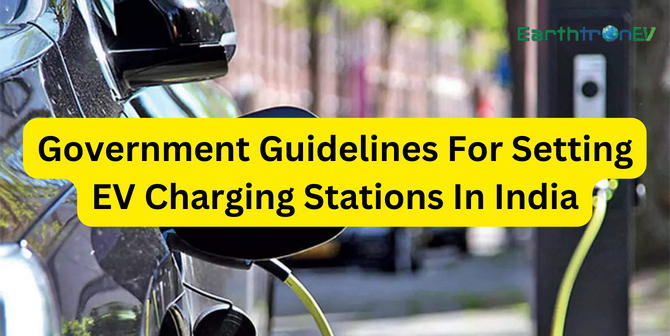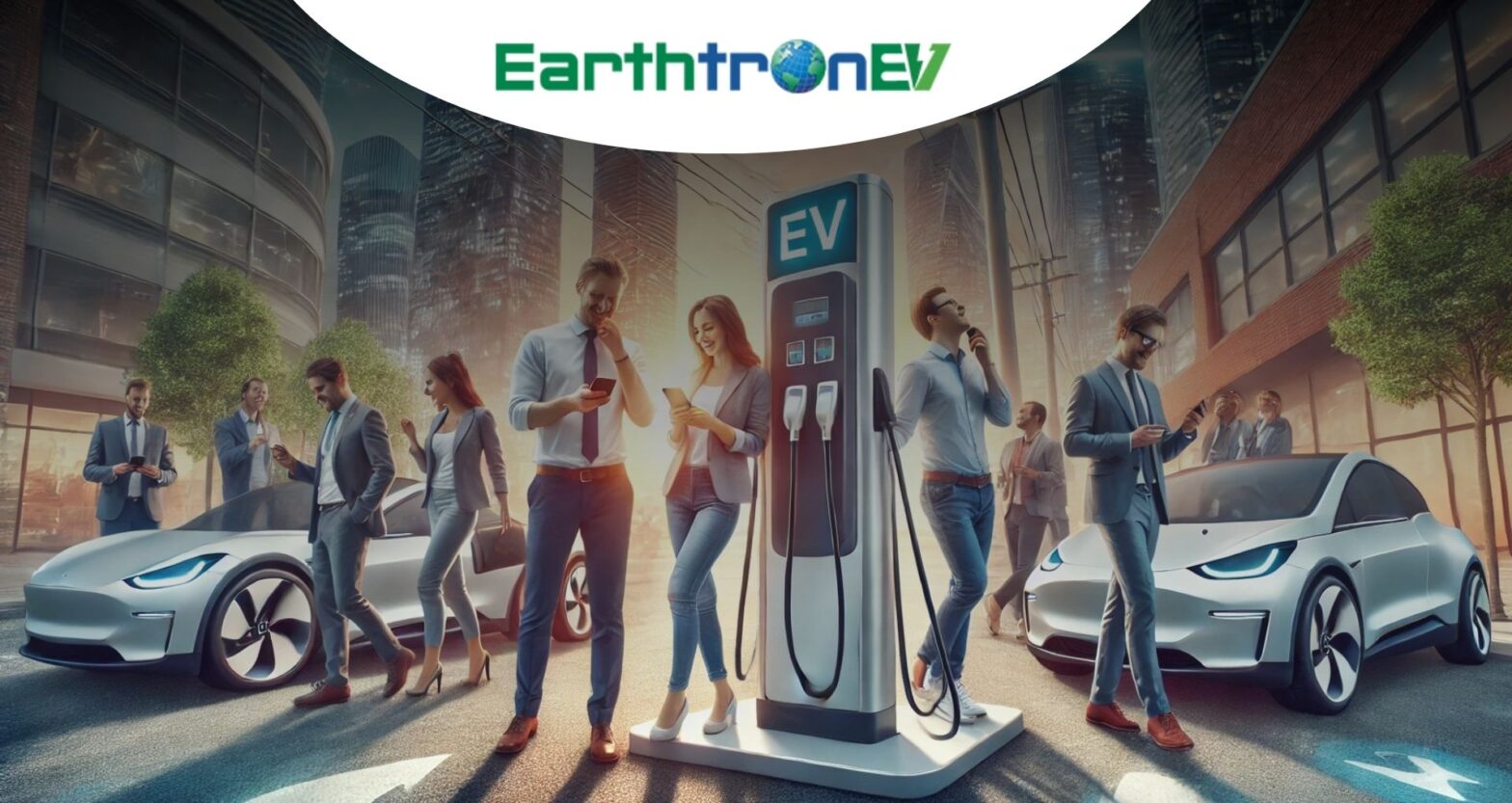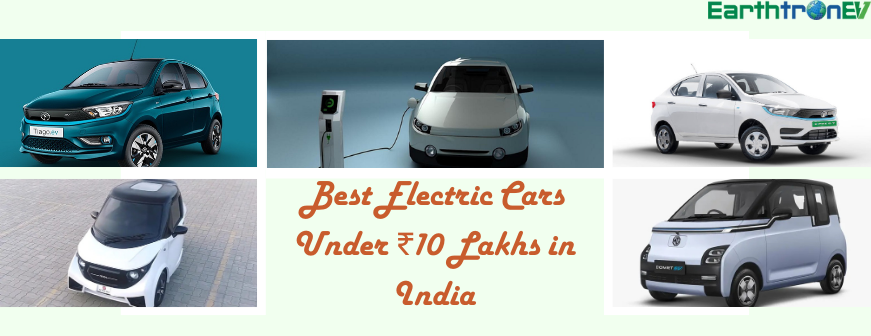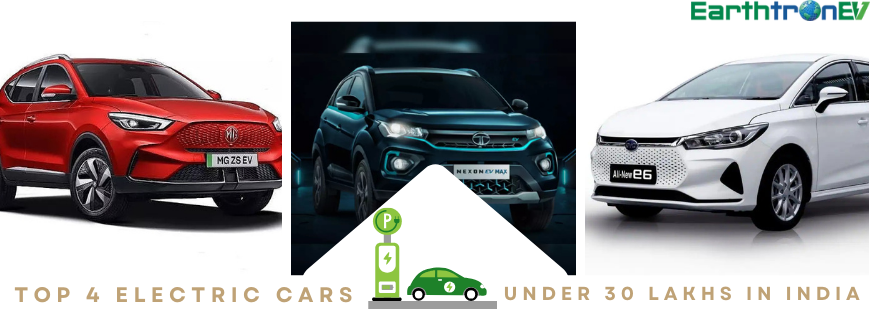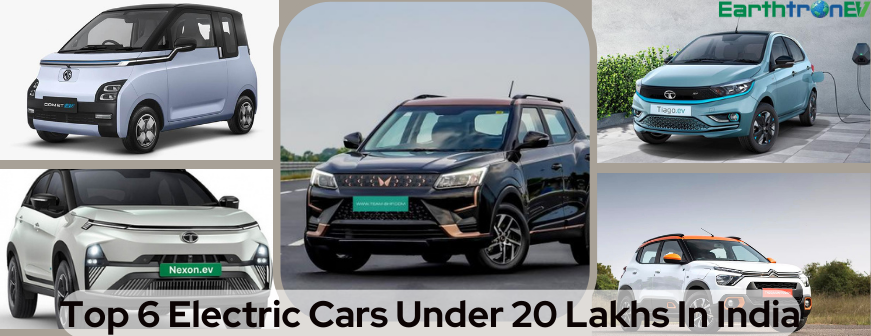As the world moves towards a sustainable future, electric vehicles (EVs) are becoming increasingly popular. But with this comes the need for more EV charging stations. The demand for these stations is growing rapidly as drivers seek convenient places to recharge their vehicles on the go.
So, what exactly is an EV charging station and what does its future hold? In this blog post, we’ll explore; everything you need to know about setting up an EV charging station in India – from government guidelines to financial help programs and why choosing the Earthtron EV franchise could be the way forward!
Government Guidelines
The Indian government has taken the initiative to promote the adoption of electric vehicles by outlining guidelines for setting up EV charging stations across the country. The Ministry of Power has laid out a set of specifications that must be followed while installing these stations, including safety regulations, technical standards, and performance parameters.
One key requirement is that all charging stations must have at least one fast-charging point capable of providing 50 kW or more output power. In addition, every station should have a minimum of three AC chargers with different ratings – Level 1 (slow), Level 2 (standard), and Level 3 (rapid).
Moreover, it’s mandatory to obtain authorization from the State Electricity Regulatory Commission before installing any EV charging station in India. This process involves submitting detailed plans specifying the location, capacity, and equipment details as per the guidelines mentioned above.
Adhering to these government guidelines ensures the safe and efficient operation of EV charging stations throughout the nation. Additionally, following these protocols can help potential investors access subsidies offered by various programs such as FAME India Scheme or SRISTI scheme.
Setting up an EV charging station can be a daunting task, especially for someone who has little knowledge about the cost breakdown. The cost of setting up an EV charging station depends on several factors such as the type of charger, its power rating, installation fees, and operating costs.
- The three primary types of chargers are level 1 (slow), level 2 (standard), and level 3 (rapid). Level 1 chargers require less capital investment as they only need a standard electric outlet to charge vehicles. However, they take longer to charge compared to other levels.
- Level 2 chargers are the most common type used in households since they offer faster charging times than level 1. Setting up this charger requires more investment since it needs dedicated electrical wiring and professional installation services.
- Level 3 chargers are expensive but offer super-fast charging times within minutes. These fast-charging stations require additional infrastructure like cooling systems and high voltage making them quite costly.
Before starting any EV charging business or installing one at your home or office premises check out the different options available based on your budget and requirements to ensure you get the best return on investment.
1. Level 1 Charging (Slow Charging)
Level 1 Charging, also known as Slow Charging, is the simplest and most basic method of charging an electric vehicle. It typically involves plugging your EV into a standard power outlet found in homes or public spaces.
While Level 1 chargers are easy to use and accessible, they are not the fastest way to charge your EV. It can take up to 12 hours for a full battery recharge with this method. This makes Level 1 charging best suited for overnight parking at home or work.
However, one advantage of slow charging is that it does not require any special infrastructure or installation costs. All you need is access to a standard electrical outlet.
Level 1 charging may be considered too slow for many drivers who require quicker turnarounds on their trips. Level 2 (Standard) or Level 3 (Rapid) chargers may be more suitable options in such cases.
Despite its limitations, Level 1 charging remains an important part of the EV infrastructure network due to its accessibility and convenience for those who have limited access to faster-charging solutions like apartment dwellers without garages or curbside parkers in urban locations.
Level 2 Charging (Standard Charging)
Level 2 charging, also known as standard charging, is a type of EV charging that can be found in public locations such as shopping centers and office buildings. It provides faster charging than Level 1, but not as rapid as Level 3.
To use a Level 2 charger, the EV driver needs to have an appropriate connector cable and access card or mobile app to initiate the charging process. The average time for fully recharging an electric vehicle using this method may range from two to six hours depending on the battery size.
The most significant advantage of Level 2 chargers is their accessibility and versatility. They are relatively affordable compared to other fast-charging stations like Level 3. Moreover, they can be installed both indoors and outdoors with ease.
With the increasing demand for Electric vehicles worldwide, installing more level-2 chargers in parking lots will become increasingly important. Having multiple levels of EV Charging Stations available at various destinations would enhance user convenience while encouraging people towards sustainable transportation options.
Level 3 Charging (Rapid Charging)
Level 3 Charging, also known as Rapid Charging, is the fastest charging option available for Electric Vehicles (EVs). This type of charging station can provide an EV with up to 80% charge in just 30 minutes.
Rapid Chargers use a DC power supply rather than AC power like Level 1 and Level 2 chargers. The higher voltage provided by DC allows more energy to be transferred to the battery faster than AC power.
However, not all EVs are compatible with Rapid Charging stations. It’s impoEV owners need to checkhicle’s compatibility before using a Level 3 charger.
Additionally, Rapid Chargers are more expensive to install than other types of charging stations due to their specialized equipment and high-power supply requirements. As a result, they are typically found along major highways or at public locations such as shopping malls or airports where people need quick charges on the go.
While Rapid Charging may not be necessary for everyday use at home or work, it provides a convenient solution for long-distance travel without having to wait hours for a full charge.
Government Financial Help Program to Support EV Charging Station
The Indian government has taken several initiatives to promote sustainable energy and electric vehicles, including establishing financial help programs for setting up EV charging stations. These programs aim to support individuals and businesses looking to invest in this field.
- One such program is the FAME India Scheme (Faster Adoption and Manufacturing of Hybrid & Electric Vehicles). The scheme provides financial assistance for EV charging infrastructure development along with other incentives that include subsidies for the purchase of electric vehicles.
- Another initiative is SRISTI (Scheme for Rejuvenation, Innovation, and Technology Upgradation), which targets small businesses or entrepreneurs by providing low-cost loans through banks. This loan can be utilized towards setting up an EV charging station.
- Moreover, banks themselves have provisions for offering loans specifically directed toward financing the installation costs related to EV charging stations. It’s a great option for those who want to invest in this technology but may not have sufficient funds upfront.
- Furthermore, rebates and incentives are also available under various state-level policies depending upon their jurisdictional laws. These policies incentivize private companies or investors by providing them with tax credits based on the number of chargers installed at their locations.
These government initiatives provide significant financial aid towards promoting clean energy while also supporting sustainable transportation options like electric vehicles. By utilizing these schemes properly, entrepreneurs can make a positive impact on society while simultaneously generating revenue from investing in one of the most promising technological advancements today – E-charging stations!
FAME India Scheme
The FAME India Scheme, also known as the Faster Adoption and Manufacturing of (Hybrid &) Electric Vehicles in India, is an initiative by the Indian government to promote electric mobility in the country. The scheme aims to create a sustainable ecosystem for EVs by providing financial incentives and infrastructure support.
Under this program, subsidies are provided for the purchase of electric vehicles and setting up charging stations. This encourages more people to adopt EVs, reducing carbon emissions and promoting cleaner air.
Additionally, several other measures have been taken such as tax exemptions on EV components import or manufacturing, R&D incentives for manufacturers, etc., making it easier for businesses involved with electric mobility to grow.
FAME India has been successful in promoting green transport in India but there’s still a long way ahead until we see widespread adoption of EVs.
SRISTI (Scheme for Rejuvenation, Innovation, and Technology Upgradation (SRISTI)) :
The Scheme for Rejuvenation, Innovation, and Technology Upgradation (SRISTI) is a financial aid program initiated by the Indian government to support the establishment of EV charging stations across India.
Under this scheme, assistance will be provided to both private and public sector entities for setting up EV charging infrastructure in urban areas as well as on highways.
The government has allocated Rs 1 billion ($13 million) for this initiative which aims to enhance the accessibility of electric vehicles by providing adequate charging facilities.
Furthermore, SRISTI also encourages technology innovation used at these charging stations and facilitates research & development activities related to advanced battery storage solutions.
This initiative is an essential step towards reducing carbon emissions and promoting sustainable transportation options in India. It not only supports entrepreneurs but also contributes to creating job opportunities across various sectors associated with EV infrastructure development.
Bank Loans Provision
Bank Loans Provision is one of the financial assistance programs offered by the Indian Government to support the establishment of EV charging stations. This program aims to provide financial help and easy access to loans for entrepreneurs who wish to set up their own EV charging station businesses.
Through this program, banks are encouraged to offer soft loan schemes with lower interest rates for those looking to establish an electric vehicle charging infrastructure. The government provides guarantees on these loans which makes it easier for banks to lend money without too much risk involved.
The Bank Loans Provision is an excellent option for new entrepreneurs or existing business owners who struggle with funding their projects. With the availability of such low-interest bank loans, they can easily finance their plans and contribute towards building a sustainable future that promotes green technology in India.
Therefore, if you’re interested in setting up your own EV charging station but lack sufficient funds, it’s worth exploring this option and taking advantage of Bank Loans Provisions available under various government schemes like FAME India and SRISTI Scheme.
Rebates and Incentives
Rebates and incentives are one of the most effective ways to promote the adoption of electric vehicles (EVs) in India. The government has introduced several schemes to encourage individuals, businesses, and local governments to switch from fossil fuel-powered vehicles to EVs.
One such scheme is the Faster Adoption and Manufacturing of Hybrid and Electric Vehicles (FAME) India program. This program aims to provide financial incentives for purchasing EVs as well as establishing charging infrastructure across the country.
Under this program, individuals can avail of a subsidy ranging from Rs. 10,000/- up to Rs. 1.5 lakh depending on the type of vehicle purchased. In addition, state governments also offer additional rebates on road tax and registration fees for EV buyers.
Businesses that invest in setting up EV charging stations can also benefit from various incentives provided by central and state government entities such as tax holidays or exemptions on customs duty for importing equipment related to e-mobility technology.
These initiatives incentivize both consumers and businesses towards transitioning towards cleaner mobility solutions while simultaneously contributing towards building sustainable transportation systems across India’s cities and highways alike.
Why choose the Earthtron EV franchise for setting up EV charging stations?
To summarize, the future of EVs in India is bright, and setting up an EV charging station can be a profitable and sustainable business opportunity. Government initiatives like FAME India Scheme and SRISTI provide financial aid to support this cause. The overall cost breakdown for setting up an EV charging station should also be taken into account.
Choosing the right EV charging station franchise partner is just as important as choosing the location for your charging station. Earthtron EV stands out among other franchises due to its expertise in the field of electric mobility, advanced technology solutions, comprehensive training programs, and excellent customer service.
By partnering with Earthtron EV, you’ll gain access to a well-established network of suppliers, distributors, and customers across India. With their end-to-end services on offer- from planning to installation – it will ensure that your investment yields maximum returns while contributing towards a cleaner environment.
So if you’re thinking about taking advantage of this growing market opportunity by setting up an electric vehicle charging station in India, consider partnering with the Earthtron EV franchise – one of the leading players in this space!
